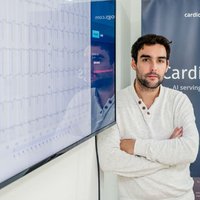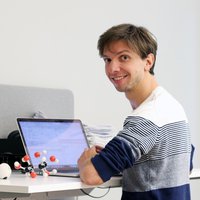Biotechnology & medicine
Dong Li
Super-resolution imaging techniques that allow cell biologists to probe cell structure and function in previously unattainable detail

Global
Shinjini Kundu
Medical images are so detailed it can be hard to decipher them. Her program can spot what people can’t.

Global
Niki Bayat
She invented materials that can heal eyes by sealing up traumatic injuries.

Europe
Yann Fleureau
His AI analyses electrocardiograms as well as a doctor, and democratises access to them

Europe
Francesco Gatto
His liquid biopsy based on the metabolism could quickly predict the evolution of several types of cancer and fine-tune treatments
